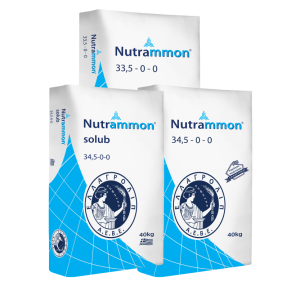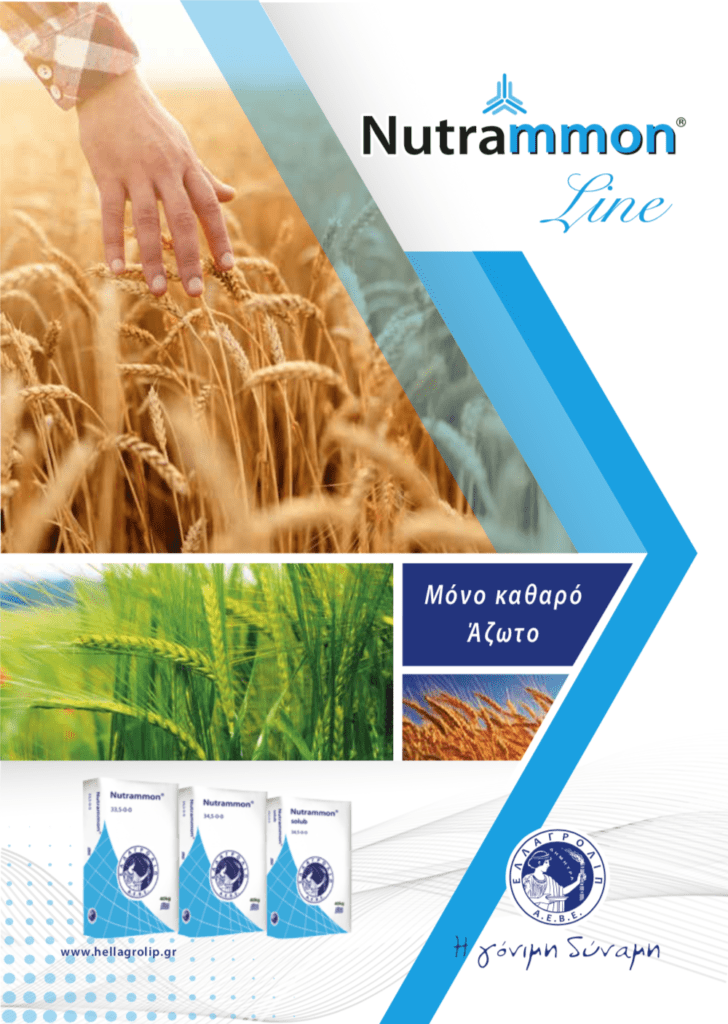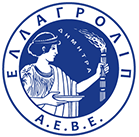- +30 213 003 7600
- +30 213 003 7600
- info@hellagrolip.com

The standard for the evaluation of Nitrogen fertilizers is their capacity to supply plants with absorbable forms of Nitrogen and to promote the quantitative and qualitative features of production.
Ammonium Nitrate are the predominantly Nitrogen fertilizers which have been developed so as to ensure this requisite as much as possible. Therefore, despite any problems that arise from their high explosiveness, Ammonium Nitrate are the most absorbable and most productive fertilizer that has been discovered to date and are a benchmark for all other Nitrogen fertilizers, in terms of performance of crop yields.
The two absorbable by plants forms of Ammoniacal (ΝΗ4) and Nitric (ΝΟ3) Nitrogen are combined in their granule in absolute purity and in a balanced ratio (50: 50).
Nitric Nitrogen is directly absorbed and meets the short-term requirements of crop, while the Ammoniacal Nitrogen fraction works as a “reserve”, ensuring their medium-term supply.
Nitrogen of Ammonium Nitrate is absorbed in an easy and immediate way, without the interpolation of any external factors between plant and fertilizer, as is the case with Urea and Ammonium Sulphate, while presents the smallest losses due to vaporization of nitrogen than any other fertilizer, simple or stabilized.

The standard for the evaluation of Nitrogen fertilizers is their capacity to supply plants with absorbable forms of Nitrogen and to promote the quantitative and qualitative features of production.
Ammonium Nitrate are the predominantly Nitrogen fertilizers which have been developed so as to ensure this requisite as much as possible. Therefore, despite any problems that arise from their high explosiveness, Ammonium Nitrate are the most absorbable and most productive fertilizer that has been discovered to date and are a benchmark for all other Nitrogen fertilizers, in terms of performance of crop yields.
The two absorbable by plants forms of Ammoniacal (ΝΗ4) and Nitric (ΝΟ3) Nitrogen are combined in their granule in absolute purity and in a balanced ratio (50: 50).
Nitric Nitrogen is directly absorbed and meets the short-term requirements of crop, while the Ammoniacal Nitrogen fraction works as a “reserve”, ensuring their medium-term supply.
Nitrogen of Ammonium Nitrate is absorbed in an easy and immediate way, without the interpolation of any external factors between plant and fertilizer, as is the case with Urea and Ammonium Sulphate, while presents the smallest losses due to vaporization of nitrogen than any other fertilizer, simple or stabilized.
The fully water-soluble and absorbable Nitrogen is provided without delay to crop and ensures the demand energy required for a quickly growth of the root and the above-ground part of the plant, while its composition improves the intake of other elements (K, Ca, Mg), promotes fruit setting and contributes significantly to increased production.
In cereals, Ammonium Nitrate is the top-dressing fertilizer that covering in the best way their requirements, providing complete nutrition, increases yields, and gives the highest production of grain and protein.
Unlike Urea, Ammonium Nitrate has no restrictions on the application time. It responds well, both at low and high ground temperatures. It requires much less water than any other fertilizer to exploit from the crop and is the most reliable source for directly supply the plants with Nitrogen, offering to farmer the flexibility to fertilization program.
Depending on the requirements of cereals, it can be applied from the beginning of the tillering (weak soils with low plants density) until very late during the culm elongation (high fertile soils with high plants density) giving excellent results in periods which other fertilizers are lagging behind or create serious problems for cereals.
When its applied in two doses, with 2/3 of the total amount at the tillering stage and 1/3 just before the ear’s emergence, it gives the highest grain production and the highest protein content, compared to any other top-dressing fertilizer.
Cereals which fertilized with Ammonium Nitrate, present robust growth, have lower water requirements, give high yields and grain rich in protein, increasing the quantitative and qualitative characteristics of production.
The fully water-soluble and absorbable Nitrogen is provided without delay to crop and ensures the demand energy required for a quickly growth of the root and the above-ground part of the plant, while its composition improves the intake of other elements (K, Ca, Mg), promotes fruit setting and contributes significantly to increased production.
In cereals, Ammonium Nitrate is the top-dressing fertilizer that covering in the best way their requirements, providing complete nutrition, increases yields, and gives the highest production of grain and protein.
Unlike Urea, Ammonium Nitrate has no restrictions on the application time. It responds well, both at low and high ground temperatures. It requires much less water than any other fertilizer to exploit from the crop and is the most reliable source for directly supply the plants with Nitrogen, offering to farmer the flexibility to fertilization program.
Depending on the requirements of cereals, it can be applied from the beginning of the tillering (weak soils with low plants density) until very late during the culm elongation (high fertile soils with high plants density) giving excellent results in periods which other fertilizers are lagging behind or create serious problems for cereals.
When its applied in two doses, with 2/3 of the total amount at the tillering stage and 1/3 just before the ear’s emergence, it gives the highest grain production and the highest protein content, compared to any other top-dressing fertilizer.
Cereals which fertilized with Ammonium Nitrate, present robust growth, have lower water requirements, give high yields and grain rich in protein, increasing the quantitative and qualitative characteristics of production.
● Nitrogen is contained in its entirety in immediately absorbable form for the plants.
● Balanced ratio (50:50) of fast Nitric (NO3) and extend Ammoniacal (NH4) absorbable Nitrogen.
● Adequate nutrition, which covers the immediate and medium-term needs of the plants.
● Year-round reliable supply to crops. Flexible fertilizing scheduling.
● Fewer losses from Nitrogen vaporization during the summer.
● Increase the intake of cations (Κ, Ca, Mg) from the crops and limit the toxic effects of chlorine (Cl).
● Affect the acidity of the soil less than other fertilizers.
● Perfectly cover the increased needs in Nitrogen, both during growing season and during the development of the grains.
● Increase yield by hectare, and the carbohydrate and protein content of the products.
● Ensure a uniform dispersion of Nitrogen in the field.
| Product |
Total Nitrogen (Ν) |
Ammoniacal Nitrogen (ΝΗ4) |
Nitric Nitrogen (NO3) |
|---|---|---|---|
| Nutrammon 33,5 33,5-0-0 |
33,5% | 16,5% | 17% |
| Nutrammon 34,5 34,5-0-0 |
34,5% | 17% | 17,5% |
| Nutrammon solub 34,5-0-0 |
34,5% | 17% | 17,5% |
| Product |
Total Nitrogen (Ν) |
Ammoniacal Nitrogen (ΝΗ4) |
Nitric Nitrogen (NO3) |
|---|---|---|---|
| Nutrammon 33,5 33,5-0-0 |
33,5% | 16,5% | 17% |
| Nutrammon 34,5 34,5-0-0 |
34,5% | 17% | 17,5% |
| Nutrammon solub 34,5-0-0 |
34,5% | 17% | 17,5% |






